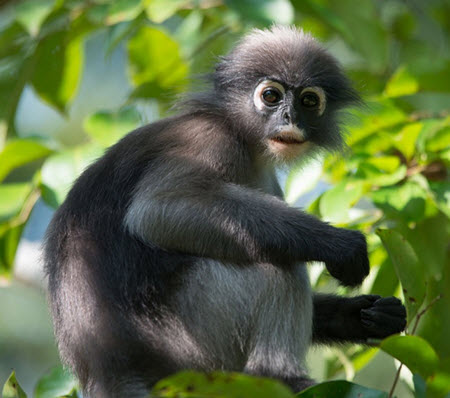Spanning an area of over 2,900 square kilometres, the Kaeng Krachan National Park is the largest national park in the entire country. You’ll find this park along the Burmese border in western Thailand, and it is adjoined with the Burmese Tanintharyi Nature Reserve on the other side.
This national park consists chiefly of tropical rainforest growing on the eastern slope of the Tenasserim Mountain Range. The biodiversity is high, and includes both tropical and subtropical species. Despite being a national park, prive plantations do exist here.
Many of the tourist that visit Kaeng Krachan National Park have their lodging in the nearby beach town Hua Hin, on the Gulf of Thailand. Phetchaburi City, also located on the gulf coast, is another option.
Short facts about the Kaeng Krachan National Park
| Established | 12 June 1981
Enlarged in December 1984 |
| Size | 2,914 km2
1.8 million rai |
| Coordinates | 12°45′0″N 99°36′0″E |
| Highest elevation | 1,513 meters |
| Provinces | Phetchaburi Province and Prachuap Khiri Khan Province |
| Nearest city | Phetchaburi City |
Rivers
Two important Thai rivers originate within the park: Pranburi River and Phetchaburi River. At the eastern border of the park, the hydro-electric Kaeng Krachan Dam forms an artificial lake (approximately 46 square kilometres) on the Phetchaburi River.
Fauna
57 mammal species and well over 400 species of birds have been observed in the Kaeng Krachan National Park, and this is also a prime location for butterfly-watching with over 300 identified species.
 One example of a mammal that live here is the Dusky leaf monkey, also known as the Spectacled langur (Trachypithecus obscurus), a primate endemic to the Malay Peninsula region. (picture to the right)
One example of a mammal that live here is the Dusky leaf monkey, also known as the Spectacled langur (Trachypithecus obscurus), a primate endemic to the Malay Peninsula region. (picture to the right)
Wild elephants live within the park, but do not receive sufficient protection from poachers. Despite being a national park, illegal killing of wild elephants do occur here. There has also been at least one reported accidental death where an elephant calf was fatally electrocuted by an electric fence belonging to a private plantation within the park.
Other examples of mammals present in the park:
- Leopard
- Clouded leopard
- Tigers (although they are only rarely spotted in the park)
- Sun bear
- White-handed gibbon ape
- Stump-tailed macaque
- Dhole (Asiatic wild dog)
- Golden jackal
- Crab-eating mongoose
- Gaur (“Indian bison”)
- Banteng (this wild bovine exist in the park, but is not common there)
- Malayan porcupine
Examples of birds found in the park:
- Great argu
- Grey-headed fish eagle
- Whooly-necked stork
- White-fronted scops owl
- Ratchet tailed treepie
- Giant pitta
- 7 different species of Broadbill
- 7 different species of Hornbill
Examples of snakes found in the park:
- Brongersma’s short-tailed python
- Mountain pit viper
- White-lipped pit viper
- Pope’s pit viper
- Blue coral snake
- Siamese cat snake
- The green morph of the Oriental vine snake
